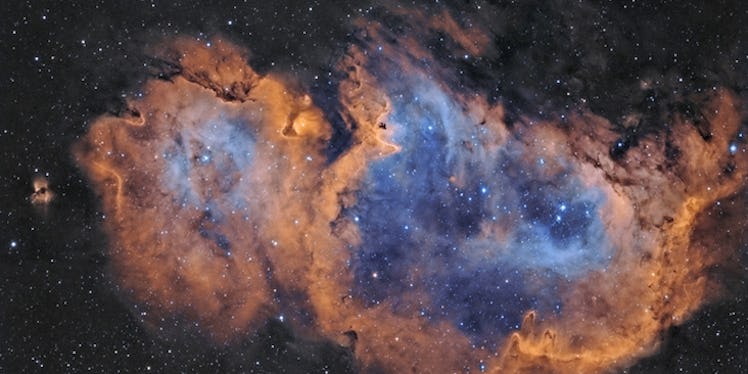
What This Weekend's Perseid Meteor Shower Will Actually Look Like
The Perseid meteor shower coming up on Aug. 12 is being billed as one of the biggest astronomical events in the last 96 years -- that is, based on false information circulating around the internet in meme-form. And yes, it's a cool astronomical occurrence to have a meteor shower happening, but what will the Perseid meteor shower actually look like? Turns out, this is not going to be the once in a lifetime opportunity you might have been reading about. It's a meteor shower, not the season finale of Game of Thrones.
I'm not trying to be a huge f*cking bummer for all you science nerds out there. I mean if meteor showers are the thing you really get off to, I'm not saying to put away your lube and your telescope. You'll still get to see your average 80 meteors per hour up in that big night sky, which will be visible if the sky is dark enough and weather permits. But there is a lot of "fake news" floating around the internet about this weekend's shower, and we're here to debunk it for you.
For instance, none of this is true:
That's enough flying rocks for you to get your rocks off to, but it's not what some bogus sites are claiming. Physics Astronomy billed the shower with an all-caps headline, claiming "THE BRIGHTEST METEOR SHOWER IN THE RECORDED HUMAN HISTORY IS HAPPENING." This is a claim astronomers would be reluctant to make, according to Bill Cooke, head of NASA's Meteoroid Environment Office at Marshall Space Flight Center. In a recent interview with NPR, Cooke said that the erroneous information circulating about this year's showers "definitely didn't come from astronomers, who tend to be precise and even cautious about making predictions of any kind."
You can still catch the shower if you grab a blanket or a lawn chair, head out with friends to a nice grassy knoll and sit back to wait for the cosmic fireworks. I just want to let everyone know that it might not be the starry Cirque du Soleil you were promised if you've come across any number of fake memes out there.
Unfortunately, the moon being three-quarters full will make it a lot tougher to actually see the shower this year. Under the best conditions, a meteor shower looks like a ton of shooting stars going off at the same time, but watching a meteor shower with an almost-full moon is like trying to see the stars in New York City. Cooke told Space.com, "Instead of 80 to 100, [there will be] 40 to 50 per hour. And that's just because the moon's going to wash out the fainter ones."
Hey, at least the meteoric blasts of fake news about the meteor shower have been an impressive opening act.
If you don't know what a meteor shower is, well, it's when the Earth passes through debris from the Swift-Tuttle comet. It is not a once-in-a-lifetime opportunity because the Perseid shower happens every single year from July through Sept, reaching its peak in August, so if you miss it this year, there's always next year. You don't have to wait until you're on your deathbed for the next one.
I hope this helps manage some of your expectations, and I wish you some very happy sky-watching.